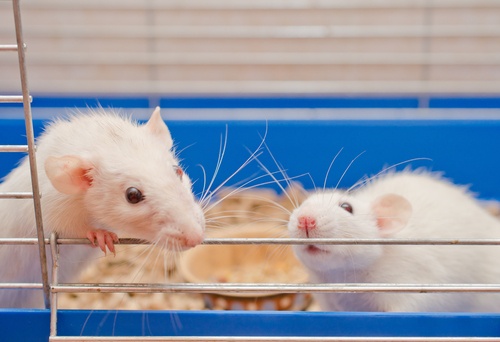Share this
medical breakthroughs made possible by animal research
by Neoteryx Microsampling on Jul 5, 2017 4:09:00 AM

Animals have been used for millennia as experimental subjects. In the 1600s, William Harvey demonstrated that blood is circulated throughout the body by using animals; establishing the existence of blood pressure by the twentieth century.
The beginnings of pharmacology and physiology, and the understanding of hemodynamics all have their roots in animal testing. And by the twentieth century innovations in medical science exploded due to animal experimentation. Like Pasteur and Koch’s introduction of germ theory which consequently introduced the concept of sterilization to the world.
Bacterial diseases began to be conquered by the introduction of antibiotics, which had evolved only because of the use of animal research by scientists like Alexander Fleming. What had once been deadly illnesses became bumps in the road.
Vaccines multiplied, and thanks to Jonas Salk and the animals he used, the word polio no longer struck terror in the hearts of parents. Diphtheria, tetanus, mumps, measles, and rubella went the same way. Smallpox was eradicated from the natural world.
Surgical techniques were developed and refined with the use of animals. Hip and other joint replacements became possible for people with severe arthritis and constant pain. Arteries clogged with plaque could be opened. Kidney dialysis would not have happened without animal research. Organ transplants had to be done in animals long before they could be done in people.
Just about every medication has a history of animal experimentation, from antihypertensives to chemotherapy to thyroid hormones to vitamins. Even radiology has benefited from animal research especially in the development of CT and MRI scanners.
But humans are not the only ones to prosper. Veterinary medicine and animal husbandry have seen great advances from using animals to test drugs that have saved other animals.
Countless mice, dogs, monkeys, sheep, and other animals have helped to create innovations in medical science and have saved many human lives.
Now, technological and practical advances are making animal testing more efficient and more humane, with the proliferation of the "3Rs" allowing for further experimentation but with less harm to animals. Find out how the use of microsampling technology in preclinical research is an important breakthrough in this process.
Share this
- Microsampling (206)
- Research, Remote Research (119)
- Venipuncture Alternative (105)
- Clinical Trials, Clinical Research (83)
- Mitra® Device (73)
- Therapeutic Drug Monitoring, TDM (51)
- Dried Blood Spot, DBS (39)
- Biomonitoring, Health, Wellness (30)
- Infectious Disease, Vaccines, COVID-19 (24)
- Blood Microsampling, Serology (23)
- Omics, Multi-Omics (21)
- Decentralized Clinical Trial (DCT) (20)
- Specimen Collection (18)
- Toxicology, Doping, Drug/Alcohol Monitoring, PEth (17)
- Skin Microsampling, Microbiopsy (14)
- hemaPEN® Device (13)
- Preclinical Research, Animal Studies (12)
- Pharmaceuticals, Drug Development (9)
- Harpera Device (7)
- Industry News, Microsampling News (5)
- Antibodies, MAbs (3)
- Company Press Release, Product Press Release (3)
- Environmental Toxins, Exposures (1)
- July 2025 (1)
- May 2025 (1)
- April 2025 (2)
- December 2024 (2)
- November 2024 (1)
- October 2024 (3)
- September 2024 (1)
- June 2024 (1)
- May 2024 (1)
- April 2024 (4)
- March 2024 (1)
- February 2024 (2)
- January 2024 (4)
- December 2023 (3)
- November 2023 (3)
- October 2023 (3)
- September 2023 (3)
- July 2023 (3)
- June 2023 (2)
- April 2023 (2)
- March 2023 (2)
- February 2023 (2)
- January 2023 (3)
- December 2022 (2)
- November 2022 (3)
- October 2022 (4)
- September 2022 (3)
- August 2022 (5)
- July 2022 (2)
- June 2022 (2)
- May 2022 (4)
- April 2022 (3)
- March 2022 (3)
- February 2022 (4)
- January 2022 (5)
- December 2021 (3)
- November 2021 (5)
- October 2021 (3)
- September 2021 (3)
- August 2021 (4)
- July 2021 (4)
- June 2021 (4)
- May 2021 (4)
- April 2021 (3)
- March 2021 (5)
- February 2021 (4)
- January 2021 (4)
- December 2020 (3)
- November 2020 (5)
- October 2020 (4)
- September 2020 (3)
- August 2020 (3)
- July 2020 (6)
- June 2020 (4)
- May 2020 (4)
- April 2020 (3)
- March 2020 (6)
- February 2020 (3)
- January 2020 (4)
- December 2019 (5)
- November 2019 (4)
- October 2019 (2)
- September 2019 (4)
- August 2019 (4)
- July 2019 (3)
- June 2019 (7)
- May 2019 (6)
- April 2019 (5)
- March 2019 (6)
- February 2019 (5)
- January 2019 (8)
- December 2018 (3)
- November 2018 (4)
- October 2018 (7)
- September 2018 (6)
- August 2018 (5)
- July 2018 (8)
- June 2018 (6)
- May 2018 (5)
- April 2018 (6)
- March 2018 (4)
- February 2018 (6)
- January 2018 (4)
- December 2017 (2)
- November 2017 (3)
- October 2017 (2)
- September 2017 (4)
- August 2017 (2)
- July 2017 (4)
- June 2017 (5)
- May 2017 (6)
- April 2017 (6)
- March 2017 (5)
- February 2017 (4)
- January 2017 (1)
- July 2016 (3)
- May 2016 (1)
- April 2016 (2)



No Comments Yet
Let us know what you think